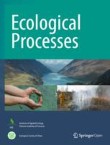Machine learning applied to species occurrence and interactions: the missing link in biodiversity assessment and modelling of Antarctic plankton distribution
Plankton is the essential ecological category that occupies the lower levels of aquatic trophic networks, representing a good indicator of environmental change. However, most studies deal with distribution of ...

